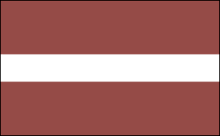NOWE WYDAWNICTWA! TAJEMNICZE MIASTO - TOM 1 ORAZ PRZEWODNIK PORÓWNAWCZY CZ.
2
-
[image:
http://www.cmsklep.eu/michal-szymanski-warszawa-tajemnicze-miasto-stara-warszawa-p-137.html]
[image:
http://www.cmsklep.eu/warszawa-pozostale-d...
niedziela, 6 lutego 2011
BUDAPESZT CZ. 1
Wyświetl większą mapę
Budapeszt jest stolicą Węgier i ich największym miastem (ponad 1.720.000 mieszkańców), podzielonym na Budę, Obudę i Peszt. Tak jak w przypadku innych, większych miast, musiałem podzielić Budapeszt na kilka spacerów. Zaczynamy od Starówki i Wzgórza Zamkowego.
Budapest is a capital of Hungary and its biggest city (1.720.000 inhabitants) and it's divided into 3 parts: Buda, Pest and Obuda. I've divided the walk around the city into some parts, because there are too many photos. We start with the Old Town and Castle Hill.
Ulica Tarnok
Tarnok Street
Skrzyżowanie Disz Ter i Tarnok utca.
Crossroads of Disz Ter and Tarnok Street.
Pomnik Honveda
Jest to pomnik węgierskiego żołnierza Wiosny Ludów, postawiony tu w 1893.
Honved Monument
It's a monument of hungarian soldier, who fought during the Revolutions of 1848. It was raised here in 1893.
Wyjątkowa Matka Boska
Unique St. Mary
Fontanna
Fountain
Kościół św. Macieja... w remoncie kompletnym :(
Zbudowany w XIII w., miały tu miejsce koronacje królów węgierskich, a król Maciej Korwin brał tu ślub aż dwa razy. Po 1541, kiedy Turcy zajęli Budapeszt, kościół przerobiono na meczet - jednak po powrocie panowania Węgrów w 1686 powrócono do kościelnej funkcji budynku.
St. Nicholas church... during renovation :(
It was built in the XIII c., there were crownings of Hungarian kings and the king Matias Hunyadi (Matyas Corvinus) married here twice. In 1541, when Turks took Budapest, they made a mosque here, but soon after regaining the city in 1686, there was church here again.
Pomnik Trójcy Świętej
Holy Trinity monument
Hotel Hilton
Hilton Hotel
Dawny ratusz Budy
Powstał w XVII w.
Old Townhall of Buda
Built in XVII c.
Pomnik św. Stefana
Odsłonięty w 1906, wykonany przez Alajosa Strobla. Św. Stefan był pierwszym królem Węgier i patronem Węgier.
St. Stefan monument
It was made by Alajos Strobel in 1906. Stefan was the first king of Hungary and a patron of the country.
Baszta Rybacka
Powstała na pocz. XX w. na resztach starych murów miejskich.
Fishermen Keep
It was built at the beginning of XX c. in the place of old and ruined city walls.
Kościół św. Mikołaja z gawronem (corvin) na wieży
St. Nicholas church with a rook (corvin) on the tower.
Wnętrze kościoła
Church interior.
Krypta św. Emeryka, syna św. Stefana
A grave of St. Emeryk, the son of St. Stefan
Pomnik Andrasza Hadika
A monument of Andrasz Hadik
Makieta placu św. Trójcy
Holy Trinity Square maquette
Św. Stefan i kościół św. Macieja
St. Stefan and St. Nicholas church.
Wieża św. Mikołaja
St. Nicholas Tower
Widok na Peszt. Parlament.
A view on Peszt. Parliament.
Widok na Budę i Peszt po drugiej stronie Dunaju
A view on Buda and Peszt on the other side of Danube.
Buda.
Buda
Pod wzgórzem
Under the hill
Św. Stefan.
St. Stefan
Uri Utca
Muzeum Sztuki Współczesnej
A muzeum of modern art
Ruiny starej katedry
Ruins of old cathedral
Tablica z historią katedry zamkowej
A board with the history of castle cathedral.
Brama na zamek
A gate into the castle
Most Łańcuchowy
Powstał w 1839-49, jest to jeden z symboli miasta.
Chain Bridge
Made in 1839-49, one of the city symbols.
Parlament po drugiej stronie Dunaju
Parliament on the other side of Danube.
Brama z ptaszyskiem
Palota Utce
Tabor Utca
Subskrybuj:
Komentarze do posta (Atom)



















































































1 komentarz:
Keep on writіng, great job!
Also visit my sіte ... eventi aziendali
Prześlij komentarz